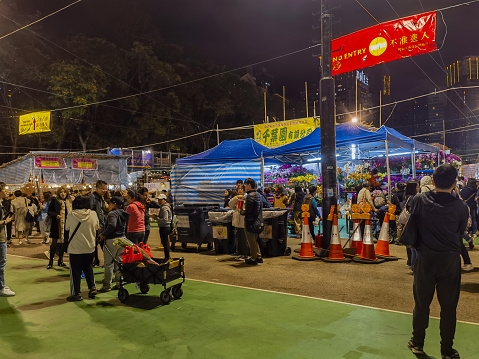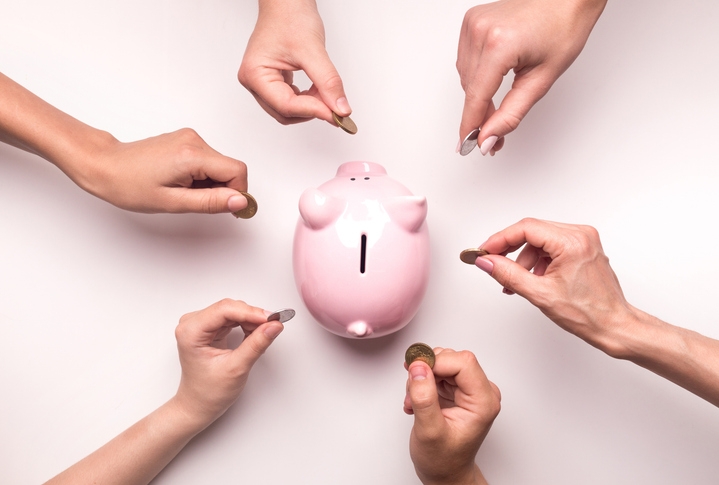How to Maximize Trade Show Lead Generation in 2025
Discover practical lead generation strategies for trade shows that drive results. Maximize your impact and boost your event success—read the article now!

In today’s hyper-competitive event space, it’s not just about showing up—it’s about showing up strategically. Trade show lead generation isn’t a side goal anymore—it’s the goal. Done right, your booth can become a lead generation machine, turning foot traffic into qualified leads and follow-ups into revenue.
Whether you’re planning a trade show for the first time or refining your trade show marketing strategy, this guide will walk you through the most effective trade show lead generation strategies for 2025.
Let’s break it down.
Why Lead Generation Is Central to Trade Show Success
Let’s face it—trade shows are a serious investment. Between booth design, travel, staffing, and logistics, the costs add up quickly. So, how do you ensure a strong return? Simple: by focusing your efforts on generating qualified leads.
Leads don’t become customers by accident. You need a clear follow-up process, close coordination between marketing and your sales reps, and tools that support continuous improvement after each event.
Effective trade show marketing efforts are built around connecting with potential clients who are a genuine fit for your product or service.
That starts with great pre-event planning. Know your audience, anticipate their pain points, and create a booth experience that delivers value from the first conversation.
Behind the scenes, your team should be using smart lead capture tools to organize conversations, gather insights, and mark promising contacts for immediate follow-up. This is where modern trade show planning softwares becomes invaluable—it helps manage logistics, track conversations, and streamline post-event follow-ups, so nothing slips through the cracks.
Ultimately, your trade show success depends on how well you connect, qualify, and convert.
1. Pre-Event Lead Generation Strategy
Build Interest Before the Big Day
A successful lead generation strategy starts long before your booth opens. Use your pre-event planning checklist to build momentum and attract your ideal target audience.
Smart Pre-Event Tactics to Generate Interest:
- Define your target audience using CRM data or insights from previous networking events. Knowing your audience’s specific pain points and goals lets you tailor messaging that resonates. Use event management software to keep track of it for multiple events.
- Leverage marketing automation tools to run email sequences that highlight your booth location, product launches, or special offers. These tools help keep your follow up efforts timely and consistent.
- Leverage social media platforms to tease what’s coming—whether it’s a new product, a giveaway, or a live demo. Use event-specific hashtags to create buzz and track engagement.
- Add strong calls-to-action to your event materials, email signatures, landing pages, and social posts. Offer early sign-ups for demos, VIP consultations, or exclusive content that speaks directly to your audience’s common pain points.
- Share visuals or short videos about your booth, your product’s features, or your team to generate interest and help potential customers connect with your brand’s presence even before the show.
Pro Tip: Use a trade show planning template to coordinate all your pre-show marketing activities, from campaign launch dates to team responsibilities. Trade show planning platforms like Azavista help you centralize this planning, align your lead capture methods, and ensure consistent messaging throughout.

2. Booth Design That Encourages Lead Generation
Attract, Engage, and Convert Booth Visitors
Your booth is the physical expression of your brand's presence at the trade show—it's where first impressions are made. A well-designed trade show booth isn’t just visually appealing; it actively encourages interaction, engagement, and conversions.
Strategies:
- Use interactive displays and product demos
Whether it's through live demonstrations, touchscreens, or virtual reality experiences, interactive elements make your booth memorable. They help explain your product’s features, address common pain points, and spark curiosity—especially among potential customers walking the floor. - Design for flow and engagement
Plan your booth layout using your trade show floor plan to allow seamless movement and dedicated zones for demos, consultations, and networking. Use a trade show booth planning checklist to ensure all lead capture stations and branding are properly placed. - Incorporate strong CTAs and lead capture tools
Leverage technology to increase ROI on trade shows. Use digital displays and lead capture methods like QR codes or badge scans with CTAs such as “Scan to win” or “Book a free consult.” This helps maximize lead generation while offering immediate feedback to your sales reps. - Leverage social media inside your booth
Encourage visitors to share photos or tag your brand using event-specific hashtags. Include a photo booth or branded selfie wall to enhance social engagement and build brand awareness. - Create exclusive VIP zones or quiet corners
Offer quieter spaces for direct engagement with high-value prospects. This can make your team more approachable and allow them to actively listen to specific pain points of potential clients.
Pro Tip: Use trade show planning software like Azavista to map your booth zones, assign roles, and ensure your lead capture tools are integrated with your CRM for fast, immediate follow-up.
3. Train Your Staff for Onsite Lead Qualification
Your Team Is the Frontline for Lead Quality
Even the best booth design can fall flat without a well-prepared team. Your staff are not just there to hand out brochures—they’re key to collecting leads, qualifying interest, and making meaningful connections that convert. This makes robust On-Site Event Staff Management very important.
Strategies:
- Assign clear roles
During pre-event planning, divide responsibilities among team members—greeters, product experts, demo facilitators, and lead data collectors. - Train on how to identify and qualify hot leads
Coach your staff to ask open-ended questions and actively listen to visitor needs. Encourage them to spot specific pain points, determine decision-making authority, and identify hot leads early on. - Teach the art of quick but meaningful conversations
Trade shows are fast-paced. Your staff should be skilled in communicating your product’s features concisely while engaging attendees in a way that feels genuine and helpful. - Use technology for better qualification
Leverage lead capture tools with custom fields that help staff tag leads based on interest level, timeline, and budget. This streamlines the follow up process and helps your sales team prioritize effectively. - Ensure a process for VIPs and potential clients
Not all visitors are created equal. Develop a process to route high-priority leads to senior reps or managers for direct engagement on the spot. - Reinforce brand identity and presence
Your team should reflect your brand’s presence through consistent messaging, tone, and appearance. This builds trust and leaves a lasting impression.
Use a trade show planning checklist to ensure all team members are briefed on booth objectives, key talking points, and how to use lead capture methods efficiently.
4. Use Technology to Capture and Manage Leads
Speed, Accuracy, and Integration
In today’s data-driven world, relying on business cards or handwritten forms just doesn’t cut it. Modern trade show planning demands seamless, tech-powered lead capture solutions that support your team during and after the event.
Strategies:
- Leverage lead capture tools and apps
Equip your team with mobile-friendly tools like lead retrieval apps, badge scanners, and QR code check-ins to make collecting leads fast and error-free. This ensures more accurate data and less manual work. - Integrate with your CRM or marketing automation tools
Choose trade show planning software—like Azavista—that connects directly with your CRM. This makes it easier to trigger immediate follow-up emails, assign leads to sales reps, and start nurturing workflows based on lead type. - Segment and score leads in real time
Use custom forms or tags to categorize leads as hot, warm, or cold based on engagement level and pain points. This allows your sales team to focus on hot leads post-event. - Ensure strong Wi-Fi and offline functionality
Don’t let spotty internet stall your progress. Use tools that allow offline lead capture and sync once you're connected. Always plan tech backups as part of your trade show logistics planning. - Capture more than just contact info
Ask for valuable insights like product interests, buying timeline, or specific challenges. This data collected helps personalize the follow-up process and improves lead quality. - Use interactive displays to gather interest data
Incorporate interactive demos, surveys, and virtual reality experiences to make capturing data fun while gaining insights into your potential customers' needs and behaviors.
Pro Tip: Choose trade show planning software that provides analytics dashboards, helping event organizers track key metrics like number of leads captured, source of interest, and follow-up status.

5. Offer Incentives That Matter
Motivate Visitors to Engage and Share Details
People love free stuff—but smart incentives do more than attract foot traffic. They generate interest, support brand awareness, and encourage deeper interaction that fuels lead generation.
Strategies:
- Align giveaways with your brand and audience
Instead of generic swag, offer items that reflect your brand identity and appeal to your target audience. For example, a health tech company might give away fitness trackers. - Create exclusive content or access opportunities
Provide gated resources like eBooks, product previews, or early access to new features in exchange for visitor information. This creates immediate value and attracts potential clients interested in your product’s features. - Use gamification to boost engagement
Add spin-to-win games, QR scavenger hunts, or trivia contests to your booth. These interactive elements not only engage attendees, but also make collecting lead info more natural. - Offer VIP or consultation slots for hot leads
Incentivize sign-ups for personalized demos or consults with key sales reps. This strategy helps you identify and nurture hot leads on the spot. - Pair incentives with digital lead capture
Ensure all giveaways are linked to a lead capture tool. For example, to enter a contest or receive a freebie, attendees must scan a QR code or fill out a quick survey. - Incorporate visual and digital displays
Promote your giveaways through digital screens, banner stands, and interactive displays that highlight the offer and your brand's presence on the trade show floor.
Remember: Great incentives serve dual purposes—they attract booth visitors and offer value that makes them more likely to share meaningful info, stick around, and convert later.
6. Follow-Up Plan That Closes the Loop
Your Post-Event Strategy Is Half the Battle
The trade show might be over, but your lead generation efforts are just getting started. A well-executed follow-up process is what turns those booth interactions into real business outcomes. In fact, many potential customers are lost simply due to lack of timely, targeted follow-up.
Strategies:
- Categorize leads immediately after the event
Sort the data collected into hot, warm, and cold leads. Use your lead capture tools or CRM to tag attendees based on their interests, product’s features discussed, or buying potential. This ensures your sales reps know where to focus. - Send follow-up emails within 48 hours
Timely, personalized post-event follow-ups show that your team is organized and eager to help. Include a summary of your conversation, links to relevant content, and a clear next step. - Use marketing automation to nurture leads
Leverage marketing automation tools to schedule email sequences, drip campaigns, or even retargeting ads. This helps keep attendees engaged long after the event ends. - Coordinate with your sales team for handoffs
Align with sales to ensure hot leads are contacted directly via phone or email. For warmer leads, create a nurture path using relevant content, event highlights, or special offers. - Provide exclusive post-show content
Give leads access to content they couldn’t get at the event—recorded demos, behind-the-scenes footage, or exclusive offers. It’s an easy way to encourage attendees to re-engage. - Capture immediate feedback to refine future strategy
Send surveys to learn what worked, what didn’t, and what prospects still want to know. This not only supports continuous improvement but also helps identify common pain points. - Use social media to stay visible
Share event highlights, thank attendees, and post testimonials. Invite connections from the event to follow your channels and tag attendees when posting about such events.
Remember: Effective follow-up is how you generate more leads, build trust, and ultimately drive conversions. Combine timely outreach with effective strategies, and you’ll see your trade show ROI climb.

7. Measure and Optimize
Improve With Each Show
Even the best-planned trade show is only as valuable as the lessons it leaves behind. To maximize lead generation over time, event organizers must assess performance, uncover what worked, and refine what didn’t. This approach drives continuous improvement and boosts the effectiveness of future trade show efforts.
Key Actions:
- Track key metrics that matter
Measure not just the number of leads, but the quality. How many were hot leads? How many converted into potential clients? Which booth activities led to the highest engagement or captured the most interest? - Compare data across events
Use trade show planning templates (Excel or cloud-based) to compare shows side by side—was one trade show booth layout more effective than another? Did your interactive displays at one event attract more foot traffic? - Evaluate lead-to-close ratios
Calculate the ROI by looking at leads generated vs. deals closed. This will help determine which lead capture methods and follow up strategies are most effective. - Gather internal and attendee feedback
Ask your team: What tools worked well? Where did bottlenecks occur? Then, actively listen to attendees via surveys to learn which product’s features caught their attention or what pain points weren’t addressed. - Use tech to centralize insights
Platforms like Azavista make it easy to visualize performance data from one event or across multiple. You can tag leads, track responses to your follow up efforts, and refine your marketing strategy accordingly. - Apply findings to your next show
Update your trade show planning checklist with what you learned. Use insights to adjust your booth design, refine staff training, improve pre event planning, and craft more effective talking points.
Final Thoughts: Trade Show Success Starts with Smart Lead Generation
The future of trade show participation is about more than foot traffic—it’s about delivering results. By combining trade show booth planning, smart tech, and post-event nurturing, you’re not just generating leads—you’re generating customers.
Want to make your next show your best yet? Azavista’s all-in-one platform helps you plan smarter, engage better, and follow up faster.
Explore Azavista today and transform your lead generation strategy for 2025.
More Event Marketing and Promotion












